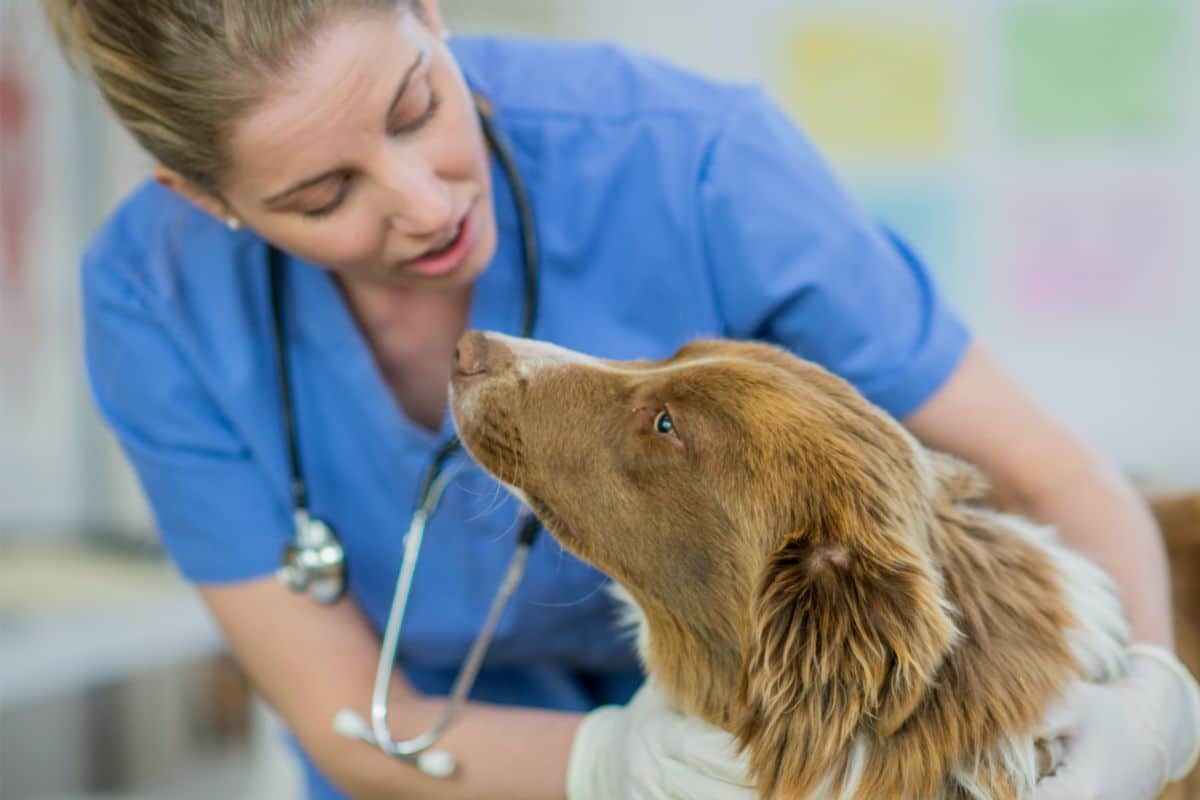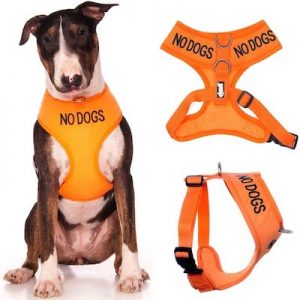If you have an aggressive or reactive pet, then you know how difficult it can be to organize visits to places like groomers or vets. But sometimes, it can’t be avoided.
Your dog still needs regular veterinary care, whether they’re aggressive or not, so here are a few tips you can practice in order to make your pup feel a bit more secure when getting to the vets, as well as protect your vet from any harm.
Why Are Some Dogs Reactive?
There are a multitude of reasons why a dog might be reactive or aggressive, particularly when put in situations with new people like vets.
These reactions come from fear – when a dog is scared, they have similar reactions to humans, that being fight, flight, and freeze.
If they can’t run away, they’re likely to freeze. If the trigger doesn’t leave, then they might lash out by growling, lunging, snapping, or even biting to protect themselves.
A lot of the time, this reaction is caused by past trauma. You’ll often find that neglected or abused animals are far more reactive than dogs who have been safe their whole lives, because they’ve needed to protect themselves in the past.
Alternatively, a dog who has been sheltered and protected their whole life might also end up reactive because they haven’t had the chance to be socialized and get used to being around other people.
In both cases, there are ways you can train a dog to not be so reactive, but in the meantime, here are some tips to help.
Bringing Your Reactive Dog To The Vet
There are some simple ways that you can make your routine visit to the vets go a lot smoother, but you have to start early. Remember that your dog isn’t trying to be bad, they are still an animal who genuinely thinks that they are in danger, or are overwhelmed.
As their owner, it’s your responsibility to support them and be a source of comfort, not another source of frustration.
Start Early
When you know that you need to take your dog to the vet, you need to start preparing them. Get them used to wearing a muzzle and with more invasive body handling than they might be used to.
Make sure you use a lot of positive reinforcement and treats during this time. You really want them to associate this kind of contact with good things in their mind.
Talk To The Vets

As soon as you call the vets, let them know that your dog is reactive so that you can arrange a strategy with them to make sure that you have the best possible experience – they might also be able to offer you some more specific advice.
If possible, try to schedule your visit for the first appointment or the very last one of the day. These are typically the quietest times of the day for the vets, making it less likely that you’ll run into too many other animals and people for your dog to react to.
Before Your Visit
Before you go for your appointment, take a few days when you take your dog out in the car (or however you travel to the vets) to get them used to the idea of leaving. This way they shouldn’t be as on edge and confused when you set off for your appointment.
Always reward your dog’s calm behavior, and give them lots of attention and comforting items.
You can get medicine that soothes anxiety in dogs, and if you need to, it could be worth trying these out for your pup.
Stay In The Car
When you arrive for your appointment, leave your dog in the car and let the secretary know
that you’ll be staying there until it’s time to go in. This will avoid having to force your dog to stay in the waiting area, full of strange smells and sounds.
The clinic should already be aware of your pet’s needs and will happily comply – they want to make sure your dog is okay just as much as you.
Have Your Exit Planned
During your dog’s exam, be sure to be there offering as much comfort (and as many treats) as you can. Once everything is done, check to see if the coast is clear for you to get back out the front, or, if things have gotten busy during your stay, ask if you would be able to slip out through the back.
Again, I’m confident that they will comply, as the last thing that they want is a reactive dog to come through and rile up a waiting room full of animals.
As well as this, vets are vets because they love animals, and they will want to support your pup as much as they can to make your visit run smoothly.
The Aftermath
Now you’re done, make sure you reward your dog with whatever they enjoy the most. Running around a field, a tasty dinner, driving with the window down. Let them know how good they were, and hope that things go just as smooth in the future.
Your dog just wants to feel safe, you get to be their comfort.





